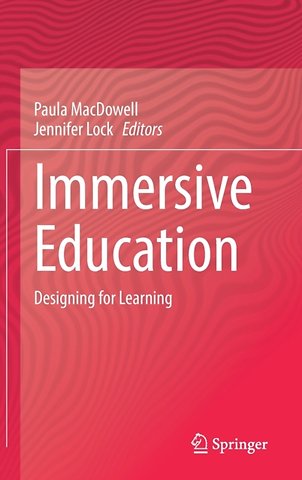Immersive Education
Designing for Learning
Gebonden Engels 2023 1e druk 9783031181375Samenvatting
This book focuses on designing and being a designer of immersive education. It introduces readers to the human experiences within immersive learning environments and contributes research evidence on the effectiveness of immersive technologies in K-12 and post-secondary contexts. Through the chapters, illustrative contextual examples and vignettes demonstrate immersive learning in real-world educational practice.
Readers will be equipped to design engaging and culturally relevant immersive experiences for learning in a post-COVID world. Immersive Education: Designing for Learning brings researchers, designers, and educators together to offer pedagogical strategies and design guidelines. The originality lies in integrating theoretical and practical knowledge to design meaningful immersive experiences, with attention to sustainability, community, and creativity.
Valuable insights are provided to support students and teachers as immersive learning designers and storytellers.
Specificaties
Lezersrecensies
Inhoudsopgave
Chapter One: Current Trends in Immersive Learning Design for K-12 and Higher Education
The introduction will outline what immersive education is and discuss the current trends in terms of how it is being taking up pedagogically in K-12 and higher education.
Section One:
Introduces the section by providing an overview of designing immersive learning experiences and environments to meet specific educational goals and learning objectives within K-12 educational contexts. Each chapter is then introduced.
The chapter titles are:
Chapter Two: Designing Augmented Reality (AR) Learning Environments to Engage Learning and Curiosity about Science
Chapter Three: A Postdigital Examination of AR and VR in the Classroom
Chapter Four: Psychopedagogy by Design: How to Induce an Emotional State Beneficial to Learning in Virtual Reality
Chapter Five: Immersive Intercultural Language Learning at the Crossroads of Virtual Realityand Game-based Learning
Chapter Six: See it and be it: Designing Immersive Experiences to Build STEM Skills and Identity
in Grades 3 – 10
Section Two:
Introduces the section by providing an overview of designing immersive learning experiences and environments to meet specific educational goals and learning objectives. Higher education is the main focus of all five chapters. The first two chapters provide information on frameworks that can be applied to both K-12 and higher education contexts. The last three chapters provide illustrative examples in higher education. Each chapter is then introduced.
The chapter titles are:
Chapter Seven:Levels of Immersive Teaching and Learning: Influences of Challenges in the Everyday Classroom
Chapter Eight: The XR ABC Framework: Fostering Immersive Learning through Augmented and Virtual Realities
Chapter Nine: From Abstract to Concreate: How Immersive Technology Allows More Effective Teaching of Complex Paradigms
Chapter Ten: Teaching the Teachers with Immersive Technology: Preparing the Next Generation of Educators at Ithaca College
Chapter Eleven: Teachers Designing Immersive Learning Experiences for Environmental and Sustainability Education
Section Three:
Introduces the section by providing an overview of teachers and students as the designers of immersive learning experiences and environments. Each chapter is then introduced.
The chapter titles are:
Chapter Twelve: Teachers Facilitating Student Virtual Reality Content Creation: Conceptual, Curricular, and Pedagogical Insights from the VR School Study
Chapter Thirteen: PEGS: Pretraining, Exploration, Goal Orientation, and Segmentation to Manage Cognitive Load in Immersive Environments
Chapter Fourteen: Interactive Storytelling through Immersive Design
Chapter Fifteen: A Classroom Model for VR Integration and Creative Lesson Design
Conclusion
Chapter Sixteen: A Vision for the Future of Immersive Education: Designing for Learning Challenges and Possibilities
The conclusion summarizes the book’s major themes, looking toward future needs for designing immersive learning in meaningful ways aligned with K-12 and higher education goals, values, and curricular outcomes. The final chapter offers a mindful call to action for a new dawn of immersive education that includes shared experiences, social connection, and shifting learning into the global classroom.
Index
Anderen die dit boek kochten, kochten ook
Rubrieken
- advisering
- algemeen management
- coaching en trainen
- communicatie en media
- economie
- financieel management
- inkoop en logistiek
- internet en social media
- it-management / ict
- juridisch
- leiderschap
- marketing
- mens en maatschappij
- non-profit
- ondernemen
- organisatiekunde
- personal finance
- personeelsmanagement
- persoonlijke effectiviteit
- projectmanagement
- psychologie
- reclame en verkoop
- strategisch management
- verandermanagement
- werk en loopbaan






